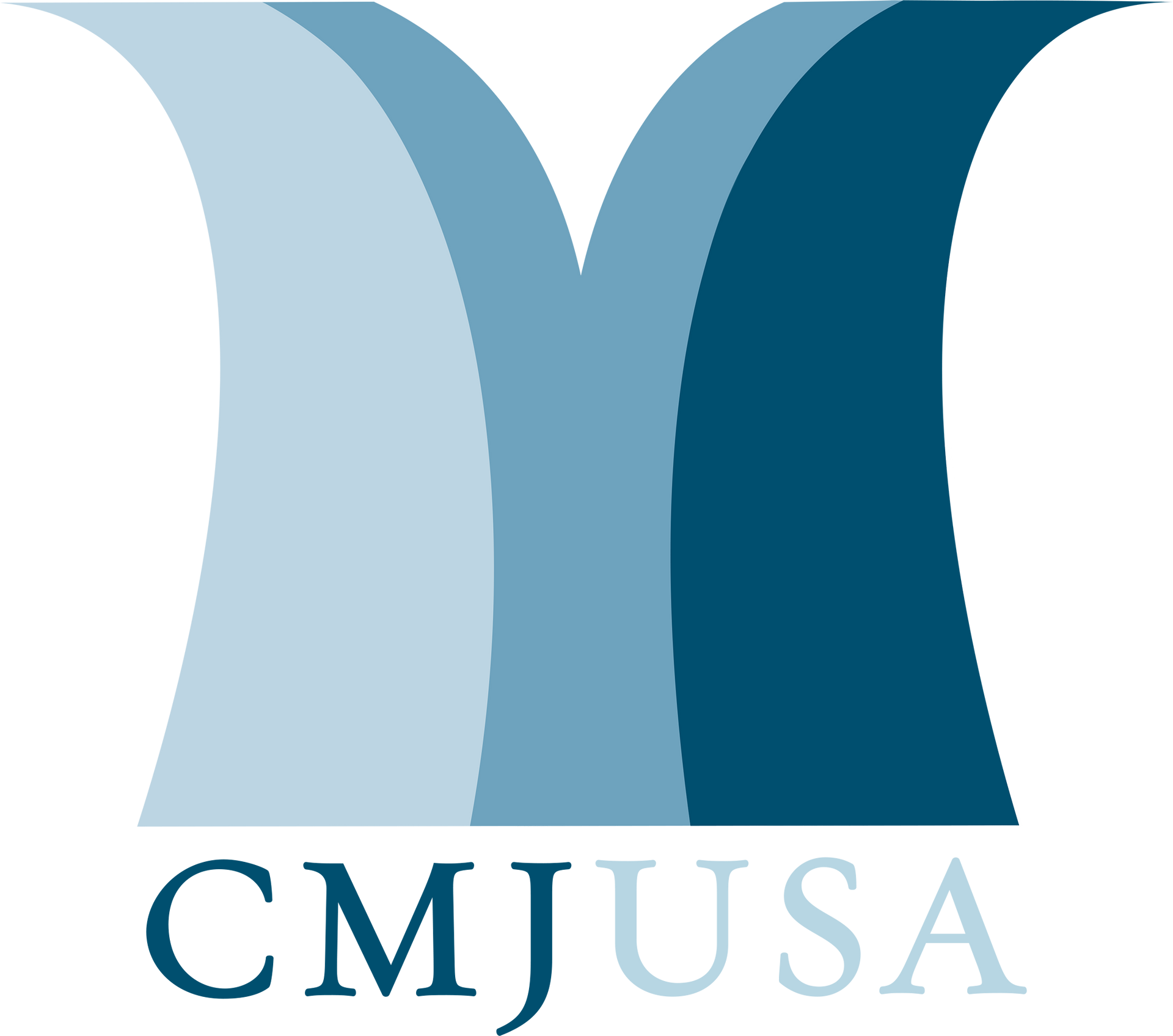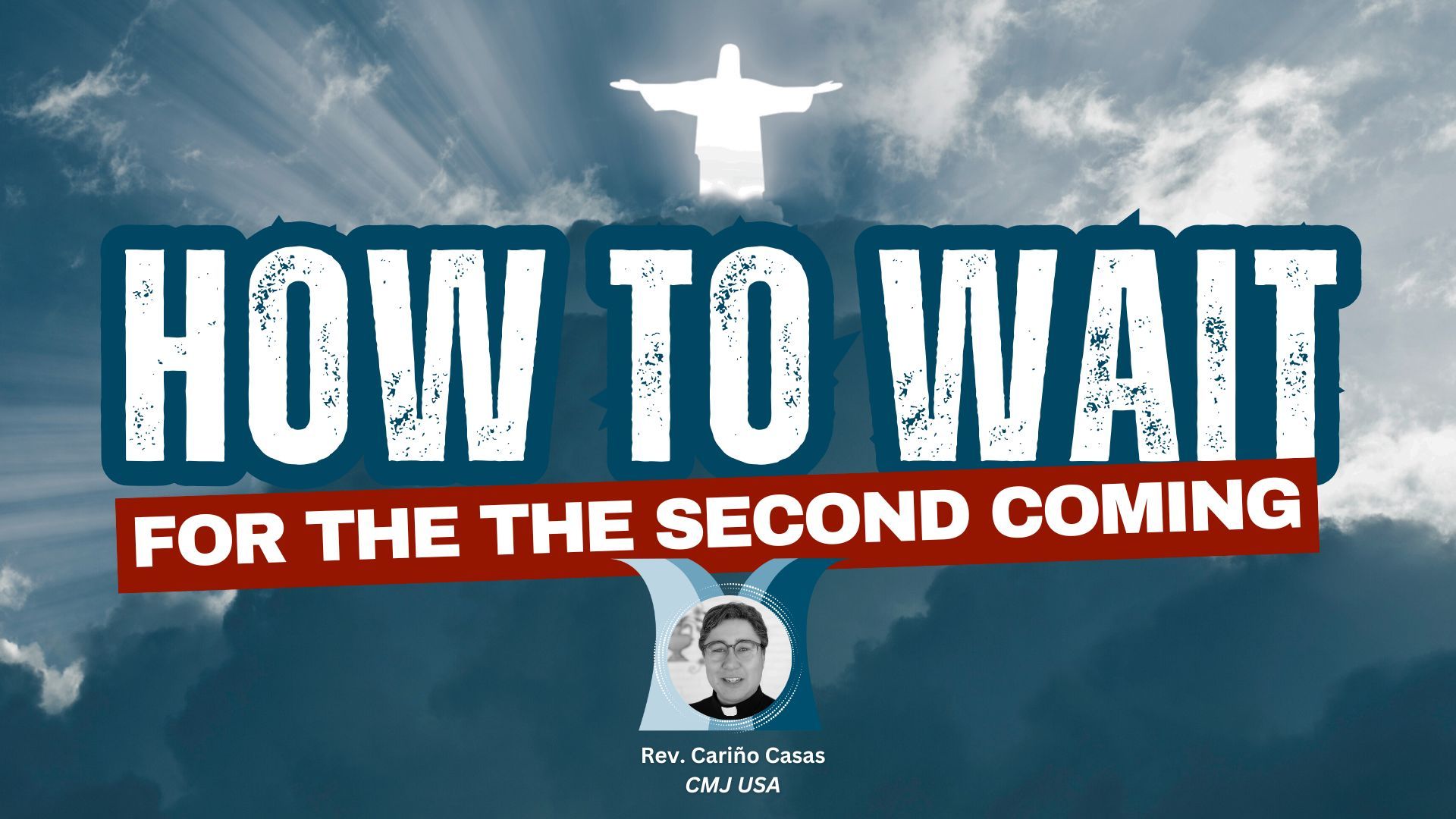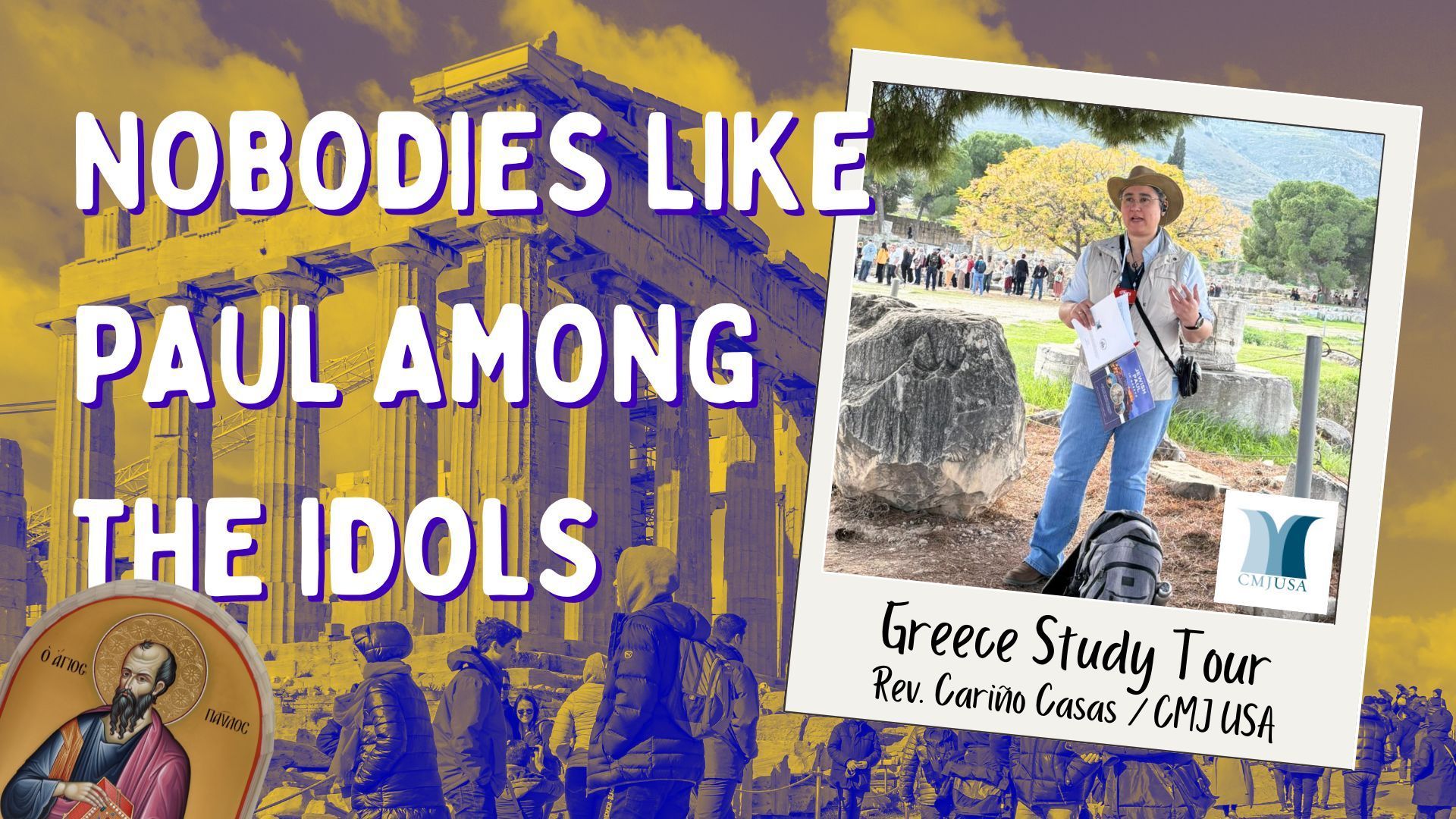Jesus comes back for the skeptic
Thomas needed to see and touch Jesus, and Jesus is good with that
This sermon as given at Jonah's Call Anglican Church in Pittsburgh, PA, on the Second Sunday in Easter. If you would like to schedule CMJ USA Executive Director Cariño Casas or another CMJ speaker, please visit our Invite Us page.
Gospel reading: John 20:19–31
Hallelujah! He is risen!
He is risen indeed! Hallelujah!
It’s been a week since the Resurrection, but our Gospel passage begins on Resurrection Sunday. The day is drawing to a close when Jesus appears in the locked room where the disciples were hiding from the Judeans.
An Aside about "Jews" in the Gospel of John
A quick aside before we get into our teaching.
Your Bible translation of John 20 may say that the disciples were hiding from the Jews. It is better translated Judeans.
Please remember that nearly all the players in Gospels are Jewish but from different geographical regions. Most of the disciples are Galilean. Many of the antagonists in the Gospels are from Judea. Jesus was born in Judea and raised in Galilee. He straddles geographic and religious lines.
The Gospel of John is not about Christians vs. Jews. John depicts different Jewish sects engaging with Jesus’ Messianic claim. John, a Jewish man, tells the story of the Messiah of Israel, and as we shall see the God of Israel, coming to reveal himself to the Jewish people first. It is Jews (from different sects) who first proclaim the Good News of Messiah to the nations.
From the other Gospels, we know Jesus had a very busy Sunday. He walks out of the tomb; he meets with Mary Magdalene; he walks to Emmaus and expounds the Hebrew Scriptures with two disciples. Those two disciples convince Jesus to stop and lodge with them because the sun is setting. When they sit down to eat and Jesus blesses the bread, they recognize him! Then Jesus vanishes! Where did he go?
These two disciples from Emmaus drop their matzah (it’s still the Feast of Unleavened Bread) and take off running back to Jerusalem. They literally run a 10K (or more). They get to the place and bang on the locked door and tell everyone “We’ve seen Jesus!”
But the two are not believed. The disciples in Jerusalem do not believe. Mary Magdalene told them she saw Jesus. Now, these two guys show up panting from a long run to tell everyone they saw Jesus in Emmaus. But they don’t believe.
Let’s imagine we’re in that room. Three days before, you saw your most trusted confidant – with whom you lived closely for three years, the one you hoped was fulfilling all the promises of God, all the promises made to Abraham, David, and the Prophets – three days before you saw him tortured and killed. You’re afraid, grieving, and confused. These reports that Jesus lives, even from other trusted friends, do not compute. The sun is setting. Another miserable day over.
Suddenly you hear a most familiar voice, “Shalom aleichem!” Peace be with you.
They’re still not sure. Are they seeing things? Is this a ghost?
No! Jesus shows them his wounds. In Luke, Jesus invites them not only to see but to “handle” him.
John deadpans: “Then the disciples were glad when they saw the Lord.”
What an understatement! The disciples were overjoyed! They rejoiced! They celebrated!
Is anybody watching The Chosen, the TV show about the life of Jesus? They haven’t depicted this scene yet, but I can just see all the disciples mobbing Jesus, hugging him, grabbing him, a loud huddle of joy and tears, laughter and shouts of joy! Don't picture dignified Englishmen or Germans giving firm handshakes and maybe pats on the back. These are emotive Middle Easterners! They are shouting and dancing, laughing and crying.
___
Our very compact Gospel passage has a lot going on. Jesus says again, “Shalom aleichem.” He commissions them. He breathes on them to receive the Holy Spirit. He deputizes them to forgive sins. Then the text fast-forwards a week.
In the Eastern tradition, the Second Sunday of Easter is called “Thomas Sunday.” Perhaps better than Thomas Sunday, we could call this day Skeptics’ Sunday.
Thomas gets a lot of grief for not being with the others a week before and for not believing their report. He famously says to them: “Unless I see in his hands the mark of the nails, and place my finger into the mark of the nails, and place my hand into his side, I will never believe.”
We do not know a lot about Thomas. Only three of his comments are recorded, all of them by John. Thomas speaks up during Jesus’s farewell speech. He also pipes up when Jesus tells the disciples they are going to Bethany to see to “sleeping” Lazarus. Then he speaks aloud his skepticism the day of the Resurrection.
Let’s look at these briefly.
Everybody knows Thomas for his need to see and touch the resurrected Jesus. He is also known for his comment in John 11, Let us go die with him.
In that episode, Mary and Martha sent word to Jesus that Lazarus was very sick.
6 So, when [Jesus] heard that Lazarus was ill, he stayed two days longer in the place where he was. 7 Then after this he said to the disciples, “Let us go to Judea again.” 8 The disciples said to him, “Rabbi, the Judeans were just now seeking to stone you, and are you going there again?” 9 Jesus answered … “Our friend Lazarus has fallen asleep, but I go to awaken him.” … 14 Then Jesus told them plainly, “Lazarus has died, 15 and for your sake I am glad that I was not there, so that you may believe. But let us go to him.” 16 So Thomas, called the Twin, said to his fellow disciples, “Let us also go, that we may die with him.” (John 11:6-16)
How do we take Thomas’ comment: “Let us also go, that we may die with him”?
It seems no one is really sure how to read this. One ancient commentator reads it as sarcastic cowardice.[1] Others see audacious loyalty – Thomas IS ready to die – but his loyalty misses the point of who Jesus is.[2] Another sees a pessimistic pragmatism that understood that the Judeans’ envy would be stoked if Jesus performed such a big miracle.[3]
Let’s look at Thomas’ other words for clues.
In Jesus’ farewell speech that starts in John 14, Jesus tells the disciples, “Let not your hearts be troubled. Believe in God; believe also in me…. I will come again and will take you to myself, that where I am you may be also. And you know the way to where I am going.” (John 14:1-4)
Thomas pipes up, probably saying what the others are thinking:
“Lord, we do not know where you are going. How can we know the way?”
Jesus said to him, “I am the way, and the truth, and the life. No one comes to the Father except through me. If you had known me, you would have known my Father also. From now on you do know him and have seen him.” (John 14:5-7)
“I am the way, the truth, and the life.”
I have long wondered about this answer, this self-definition Jesus gives. What does Jesus mean? Who Jesus is talking to may give us some insights.
Thomas says: “Lord, we do not know where you are going. How can we know the way?”
- Jesus says: I am the way.
In ancient Greece and in the Jewish rabbinic system – then and now – disciples imitate their teachers to learn. That’s why Paul says, “Imitate me as I imitate Messiah.” Rabbi Paul is following Rabbi Jesus.
“Pick up your cross and follow me” is a call to imitate Jesus in his suffering servanthood.
We imitate Jesus to be with him. - Jesus says: I am the truth.
Pontius Pilate famously asked Jesus, “What is truth?” Jesus said, “The reason I have been born, the reason I have come into the world, is to bear witness to the truth.” What truth? The truth of who God is, of God’s love for us. - Jesus says, I am the life.
This ties back to Thomas’ comment before the resurrection of Lazarus. “Let us go die with him.” Whether out of fear or loyalty, all Thomas could see was death.
Jesus – the one who created the universe – looks him in the eye and says, Don’t fear death because I am Life itself.
But Thomas can’t see it yet.
Post crucifixion, he boldly states where he’s at: “Unless I see in his hands the mark of the nails, and place my finger into the mark of the nails, and place my hand into his side, I will never believe.”
I commend Thomas. I see a man with the courage to be honest about his questions. He’s more honest about his doubts than the others are.
The other disciples did not believe Mary Magdalene nor the two brothers from Emmaus when they exclaimed they’d seen the resurrected Jesus. Most of the disciples, too, needed to handle Jesus and examine the wounds, to see him and touch him. Thomas is no different than the others.
In our Gospel reading, the others haven’t come all that far in their faith after their first encounter with the risen Jesus. Eight days later, the doors are still locked. They are still afraid. That fear won’t really be cured until Pentecost.
A week after the resurrection, Jesus visits the disciples in Jerusalem again, and again greets them, “Shalom, y’all!”
But Jesus has come for Thomas. He’s come to finish that conversation started in John 14, “I am the way, the truth, and the life…. If you know me, you know my Father also… and have seen him.”[4]
“Put your finger here,” Jesus tells Thomas, “and see my hands, and put out your hand, and place it in my side. Do not disbelieve, but believe.”
Thomas now makes the clearest, boldest declaration of Jesus’ divinity recorded in the Gospels: “My Lord and my God!”
When you live in a foreign country, you quickly learn the words for hello and goodbye and thank you, please, yes and no. For us Christians, if you start attending church in the local language, you can quickly pick up the words used in worship. Some of the first Hebrew vocabulary I learned in Israel were words of worship.
The Gospels are recorded in Greek, but Jesus and the disciples spoke Aramaic, or as some contend, closely related Hebrew. When I hear Thomas’ exclamation in Hebrew, his identification of Jesus as God is clear: “Adonai vElohai!”
Adonai is the reverential euphemism for the sacred name of God. Elohai, my God, shows up in Psalm 143 and 145. Thomas, a Jewish man, declares that Jesus of Nazareth is Adonai his God, the God of Abraham, Isaac, and Jacob.
“Have you believed because you have seen me?” Jesus replies. “Blessed are those who have not seen and yet have believed.”
Sometimes we read this as a slight on Thomas for needing to see and touch Jesus for himself. But all the disciples needed that. The eleven, even Mary Magdalene who was told by an angel that Jesus was alive, needed to see him for themselves before they trusted.
Jesus isn’t slighting their need to see him. Rather, he is blessing us who sit here as believers two millennia later. I’ve taken much encouragement from this blessing. I have taken it for myself and thanked God for the blessing of faith, a faith that comes not by seeing him directly but by seeing his working through history and in my life, by knowing that he is with me, the whole of every day. Believer, I encourage you to see that Jesus is speaking about you in this blessing. Blessed are you who have not seen and believe and know him.
Thomas’ authenticity in verbalizing his doubt speaks into our age of skepticism. Too often in the church, we are afraid of questions. We do harm when we shut down the seeking skeptic.
When I worked as a newspaper photographer, I was assigned a story about Islam growing among the Hispanics of southern California. The young man I photographed had been raised in a Christian home in Mexico. He struggled with the concept of the Trinity and went to talk to his pastor. The pastor rebuffed him, told him to stop asking questions, and just believe. That shepherd lost a sheep that day, and the young man eventually forsook Jesus and turned to Islam.
When Jesus exhorts Thomas, “Do not disbelieve but believe,” he is standing before Thomas, inviting him to investigate.
If you have questions about Jesus, about the Bible, about the Resurrection, investigate. Jesus comes back for the doubter. Jesus comes near to the questioner. Jesus is ready to show himself to you, to exhort you to trust him. Ask and it shall be given to you.
You are not alone in your questioning. One famous former skeptic is the Christian apologist Lee Strobel. Strobel was an atheist who set out to disprove the Gospels using his skills as an investigative journalist. At the end of his research, he came to know the risen Messiah. His resulting book The Case for Christ was recently made into a film.
C.S. Lewis became an atheist when his mom died and later returned to faith. His wife, Joy Davidman, was an atheist Jew who eventually came to know Jesus as the Messiah of Israel. There is a list on Wikipedia of atheists-turned-Christians.
For those of us who have skeptics in our lives, how do we minister to them? Our “job is to get to know people, not objections.” We are to love people, love them where they are. We are to show them Jesus as he is revealed to us in the Scriptures, in our everyday lives. We are to share our stories of how Jesus came to us in our need, our questions, our sin, and revealed himself to us.
Remember, we are merely messengers. We do not change anybody’s mind. We do not persuade anyone. That is the job of the Holy Spirit. Our charge is to manifest Jesus in this world, to be his healing hands. We carry Jesus within us, by the infilling of the Holy Spirit. When we walk into a room, we bring Jesus with us. We are all Christophers – Christ-bearers. The rest is up to him in how he meets our skeptic friends and satisfies their questions.
I ran across a blog post by a young man named David Reed titled “How did a skeptic like me become a Christian? After 26 years of being a perfectly convinced atheist, I accidentally became a Christian last year. What on earth is going on?”
In the article, he “comes out” as a Christian and sketches his unlikely path. When he and his fiancée were engaged, they decided to do pre-marital counseling at a church despite being atheists. They found it useful and practical and were not pressured into converting. He writes, “I found the preparations, and the process of getting married to be a huge learning curve in how to love someone — and be loved — unconditionally. Christians call this grace: unearned love that cannot be repaid and that you do not deserve. Nothing could better describe the love we received from our friends and family in the weeks around our wedding. It is totally overwhelming to experience grace — and it left me searching for answers.”
After their honeymoon, he began looking into Christianity and learning more about Jesus. He watched the Alpha Course, he read C.S. Lewis’ Mere Christianity. He asked God to show him. He writes:
There are plenty of reasonable arguments and evidence for God. But my heart did not need a proof on paper. I needed to know and witness God in my life. And there are two ways in which God responded to my need to be shown that he exists.
Firstly, through Jesus. The single most remarkable aspect of Jesus’s ministry is the one we most often take for granted. Unlike any other religious thinker that has ever lived, Jesus puts himself forward as evidence for the existence of God. If you know me, Jesus claims, you know the Father.
The more I read about Jesus, the more I have come to trust this wild and dangerous claim. His ministry is too precise to be the work of a madman, and too high in its moral calling to be the work of an impostor. The only alternative is to take him at his word. Once you do, the great mystery — God and our reason for being here — steps out from behind the curtain.
And secondly, I asked. One of the most extravagant — preposterous — claims Jesus makes about God is the absolute assurance of an answer to spiritual searching. Ask and it shall be given to you. Having found my fiercest defense against religion defeated by the evidence, I finally got on my knees and asked God, if he was real, to make himself known in my life.
He has.
As we gather to eat from Jesus’ table, confess not only your sins but your questions. Jesus is ready to meet you and satisfy your hunger and thirst for him. Amen.
Footnotes
- Chrystostom in Joel C. Elowsky, ed., John 11–21, Ancient Christian Commentary on Scripture (Downers Grove, IL: InterVarsity Press, 2007), 9.
- Cyril of Alexandrai in Elowsky, Ancient Christian Commentary on Scripture, 9.
- Origin in Elowsky, Ancient Christian Commentary on Scripture, 9. Cf. David H. Stern, Jewish New Testament Commentary : A Companion Volume to the Jewish New Testament, electronic ed. (Clarksville: Jewish New Testament Publications, 1996), Jn 11:16.
- Paraphrase of John 14:7
Blessed by this post? Ready to sow into the work of CMJ? No gift is too small. we are blessed by your partnership.



